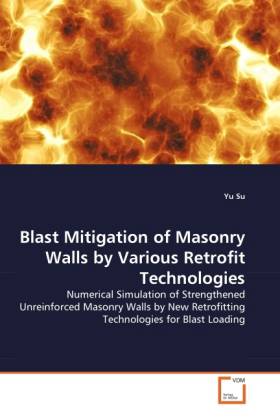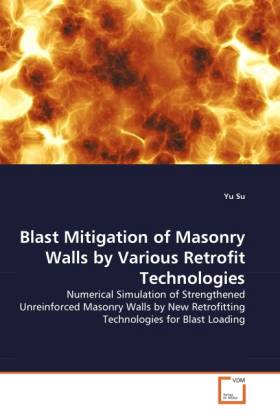
- Afhalen na 1 uur in een winkel met voorraad
- Gratis thuislevering in België vanaf € 30
- Ruim aanbod met 7 miljoen producten
- Afhalen na 1 uur in een winkel met voorraad
- Gratis thuislevering in België vanaf € 30
- Ruim aanbod met 7 miljoen producten
Zoeken
Blast Mitigation of Masonry Walls by Various Retrofit Technologies
Numerical Simulation of Strengthened Unreinforced Masonry Walls by New Retrofitting Technologies for Blast Loading
Yu Su
Paperback | Engels
€ 67,45
+ 134 punten
Omschrijving
Masonry buildings exhibit the vulnerability of poor blast-resistant capacity with little ductility. Aiming to find effective strengthening solutions to enhance masonry walls against explosion, this roject focused on studying the performance of retrofitting techniques, such as EB FRP and NSM FRP. However, the performance of the EB and NSM strips retrofits on masonry walls against blast loading is poor. This research shows that, such retrofits failed in shear or bending between strips. Hence, several other new materials, such as spray-on polyurea and aluminium foam, were also studied for mitigation of blast effect. To increase ductility of the wall, a new technique known as spray-on polyurea was employed. It was found that the capability of absorbing stain energy was the key factor that influenced performance of blast mitigation. A new energy absorbing material, aluminium foam, was applied to the masonry walls. To investigate the effectiveness of different types of retrofitting materials, debonding failure level and wall failure level were identified and then extended to greater range of pressure and impulse relationship.
Specificaties
Betrokkenen
- Auteur(s):
- Uitgeverij:
Inhoud
- Aantal bladzijden:
- 172
- Taal:
- Engels
Eigenschappen
- Productcode (EAN):
- 9783639290615
- Verschijningsdatum:
- 17/09/2010
- Uitvoering:
- Paperback
- Afmetingen:
- 150 mm x 220 mm
- Gewicht:
- 245 g

Alleen bij Standaard Boekhandel
+ 134 punten op je klantenkaart van Standaard Boekhandel
Beoordelingen
We publiceren alleen reviews die voldoen aan de voorwaarden voor reviews. Bekijk onze voorwaarden voor reviews.











